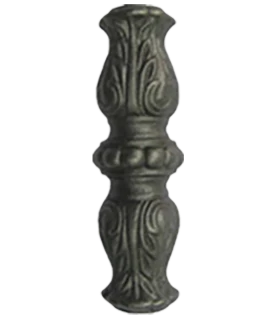Sliding Wheels for Smooth Track Movement and Enhanced Mobility Solutions
The Evolving World of Sliding Track Wheels
In the vast realm of engineering and design, few innovations have demonstrated as much versatility and utility as sliding track wheels. These remarkable components have revolutionized how we move objects, navigate spaces, and optimize efficiency across numerous industries. From logistics and manufacturing to recreational activities, sliding track wheels have secured their place as indispensable tools. In this article, we'll explore the intricacies of sliding track wheels, their applications, and the technology driving their evolution.
Understanding Sliding Track Wheels
Sliding track wheels are specialized wheels designed to glide along tracks or rails. Unlike conventional wheels that operate on flat surfaces, sliding track wheels are engineered to provide stability, reduced friction, and improved maneuverability. The idea is rooted in simple physics—by reducing the contact area and friction between the wheel and the surface, movement becomes smoother and requires less force.
The basic components of sliding track wheels include the wheel itself, the track, and the supporting frame. The wheels can be made from various materials like plastic, rubber, or metal, depending on the intended application. The tracks are typically designed to match the specific wheel type, ensuring optimal performance. The combination of these elements allows for seamless motion, making them ideal for applications where precision and control are paramount.
Applications in Various Industries
One of the most notable applications of sliding track wheels is in the logistics and transportation sector. Warehouses and distribution centers utilize these systems for moving goods efficiently. By integrating sliding track wheels into conveyor systems, businesses can reduce manual handling and streamline the sorting process. This not only increases productivity but also enhances safety, as the risk of injury from lifting heavy items is minimized.
In manufacturing, sliding track wheels play a crucial role in assembly lines. Automated guided vehicles (AGVs) and robotic systems often rely on these wheels to transport materials and components with precision. The agility provided by sliding track wheels ensures that these systems can navigate tight spaces and complex layouts, thereby optimizing workflow.
In addition to industrial applications, sliding track wheels have made significant strides in the realm of recreational activities
. For instance, roller coasters and amusement park rides incorporate specialized sliding track wheels for thrilling experiences. The design considerations in such applications focus on not only safety and durability but also the ability to handle high-speed motion and rapid direction changes.sliding track wheels

The Technology Behind Sliding Track Wheels
The advancement of technology has greatly influenced the design and manufacturing of sliding track wheels. Innovations in materials science have led to the development of lighter, stronger, and more durable wheel materials. For example, composite materials are increasingly being used to create wheels that can withstand heavy loads while minimizing resistance.
Moreover, advancements in computer-aided design (CAD) and 3D printing have allowed engineers to create highly customized wheel designs. This means that sliding track wheels can be tailored to suit specific applications, enhancing performance and efficiency. The integration of sensors and IoT technology further augments these wheels, enabling real-time monitoring of wear and tear, load weights, and operational efficiency.
Environmental Considerations
As industries evolve, so too does their responsibility toward sustainable practices. The production and use of sliding track wheels are no exception. Manufacturers are now focusing on eco-friendly materials and production processes. Many companies are incorporating recycled materials into their wheel designs and utilizing environmentally safe lubricants to reduce pollution.
In addition, the energy efficiency of systems employing sliding track wheels is a significant consideration. By minimizing friction, these systems consume less energy, contributing to a reduction in carbon footprints across various operations. This shift towards sustainability is not only beneficial for the planet but also impacts the bottom line positively, as businesses reduce waste and operational costs.
Conclusion
Sliding track wheels represent a marvel of engineering that transcends various applications, enhancing efficiency and safety across multiple sectors. Their evolution, driven by advancements in materials and technology, continues to push the boundaries of what is possible in both industrial and recreational applications. As we move forward, the emphasis on sustainability and innovation will undoubtedly shape the future of sliding track wheels, ensuring they remain a vital component in the machinery of our daily lives. Whether facilitating the movement of goods in a warehouse or providing thrills at an amusement park, sliding track wheels are here to stay, making our world a little more efficient and a lot more enjoyable.
-
Wrought Iron Components: Timeless Elegance and Structural StrengthNewsJul.28,2025
-
Window Hardware Essentials: Rollers, Handles, and Locking SolutionsNewsJul.28,2025
-
Small Agricultural Processing Machines: Corn Threshers, Cassava Chippers, Grain Peelers & Chaff CuttersNewsJul.28,2025
-
Sliding Rollers: Smooth, Silent, and Built to LastNewsJul.28,2025
-
Cast Iron Stoves: Timeless Heating with Modern EfficiencyNewsJul.28,2025
-
Cast Iron Pipe and Fitting: Durable, Fire-Resistant Solutions for Plumbing and DrainageNewsJul.28,2025
-
 Wrought Iron Components: Timeless Elegance and Structural StrengthJul-28-2025Wrought Iron Components: Timeless Elegance and Structural Strength
Wrought Iron Components: Timeless Elegance and Structural StrengthJul-28-2025Wrought Iron Components: Timeless Elegance and Structural Strength -
 Window Hardware Essentials: Rollers, Handles, and Locking SolutionsJul-28-2025Window Hardware Essentials: Rollers, Handles, and Locking Solutions
Window Hardware Essentials: Rollers, Handles, and Locking SolutionsJul-28-2025Window Hardware Essentials: Rollers, Handles, and Locking Solutions -
 Small Agricultural Processing Machines: Corn Threshers, Cassava Chippers, Grain Peelers & Chaff CuttersJul-28-2025Small Agricultural Processing Machines: Corn Threshers, Cassava Chippers, Grain Peelers & Chaff Cutters
Small Agricultural Processing Machines: Corn Threshers, Cassava Chippers, Grain Peelers & Chaff CuttersJul-28-2025Small Agricultural Processing Machines: Corn Threshers, Cassava Chippers, Grain Peelers & Chaff Cutters












